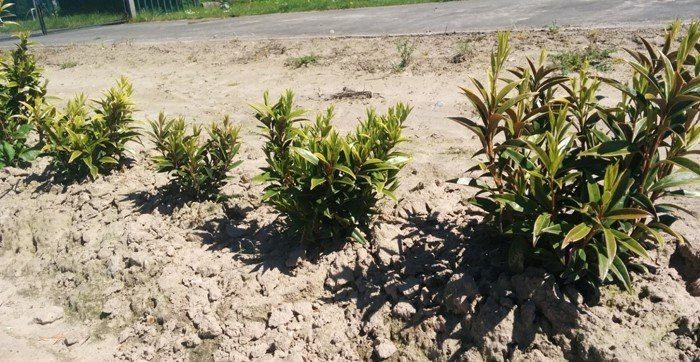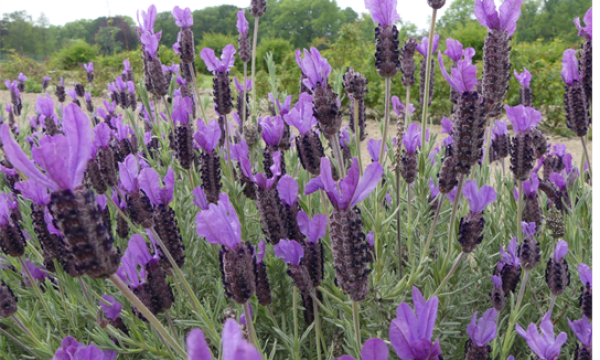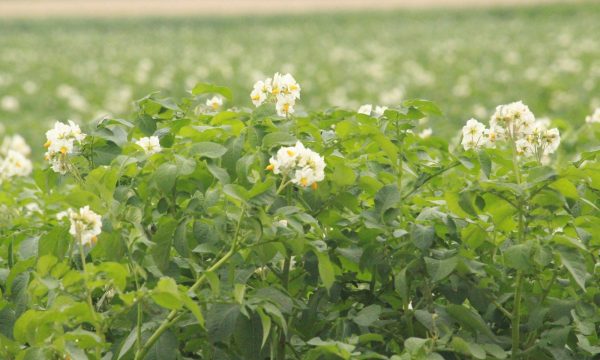Press release High-tech breeding opens door for development of compact ornamental shrubs

Compact shrubs for compact gardens: that was the goal of 4 years of research by ILVO-Ghent University researcher Hanne Denaeghel. She reached pioneering work with the application of advanced breeding techniques on woody plants.
Her study focused on two fairly unknown and less intensively-bred shrubs: Escallonia and Sarcococca (sweet box). Through techniques such as interspecific hybridization, polyploidization and co-cultivation with rhizogenic Agrobacterium strains, the researcher created new, interesting variations for the development of visually attractive and/or healthier plants. The cultivation of breeding value of these new variants will be evaluated in cooperation with BestSelect CVBA growers. Moreover, the successful applications of the used advanced breeding techniques open up perspectives for further breeding in other woody ornamental plants.
Hanne Denaeghel defended her doctorate "Advanced breeding techniques for inducing variation in woody ornamental plants" on 7 June 2018 at 16:00h. The defense took place in room E 1.015 at the Campus Coupure, Coupure Links 653, 9000 Gent. Promoters are Prof. Dr. Marie-Christine Van Labeke, Faculty of Bioscience Engineering, Ghent University and Dr. Katrijn Van Laere from ILVO.
Demand for compact ornamental plants is rising
Sarcococca, also known as sweet box or Christmas box, is an evergreen shrub with fragrant flowers in winter. Escallonia is also an evergreen shrub with a long flowering period. The names may not sound very familiar, but that can change quickly: the growers of BestSelect CVBA, a joint venture of Flemish ornamental growers, see a lot of potential in these shrubs for use in small gardens. As gardens become smaller and smaller, the demand for new varieties of compact ornamental plants increases. But there is the problem: breeding of these woody ornamental plants has happened little or not at all. Thanks to Hanne Denaeghel's research, this can now quickly change: she applied molecular and in vitro methods for the first time on these ornamental shrubs, and in doing so, offers new varieties for further development by growers.
Breakthrough in research into woody crops

This research clearly shows that there are many possibilities in woody plants for the application of polyploidization, an increase in the number of chromosomes. For example, tetraploid Escallonia genotypes were developed in which variation arose in compactness, size of the flowers and cold tolerance. The introduction of rol-genes, that is, genes from the soil bacterium Agrobacterium, also proved to have potential. Introduction of these genes causes the growth of "hairy roots" at the site of infection. Regenerating new plants from these hairy roots is the next challenge. Finally, the technique of interspecific hybridization also proved successful for Sarcococca. In this technique, different species are crossed with each other. This process also occurs to a certain extent in nature, but is now done in a targeted manner with genetically screened parent plants. The seedlings of the first generation are now further evaluated on the field as breeding material and potential new cultivars.
Efficient search for the right properties
All existing and new variants are thoroughly screened for their characteristics. To do this in a standardized way for a large number of plants, Hanne Denaeghel developed a new image analysis system. Image analysis is frequently used in larger crops such as rice and maize, but only rarely in the breeding of woody species. This is partly due to the high purchase costs of the equipment available on the market, and the large variability in the range of ornamental plants. As a result, the equipment is only rarely suitable for several genera. The tool developed at ILVO is, however, simple, cheap and widely applicable: with a white room, a camera and a computer for analyzing the photos, you can get started right away. "With this system we can display morphological properties in figures in a very objective way. For example, we can now assign a value to the plant's fullness. Especially for parameters related to plant architecture this is an enormous added value in the evaluation of plants and cultivars", explains Hanne Denaeghel.

Great potential for further research and commercialization
This research came about as a result of a demand from the tree nursery sector for the renewal and expansion of the current range of compact ornamental shrubs in general, and Sarcococca and Escallonia in particular. The plants from this study with a good combination of characteristics (compactness, health, cold tolerance, etc.) will be commercialized by the growers of BestSelect CVBA. Introduction of novelties is expected within 4 to 6 years.The successful application of the advanced breeding techniques used and the development of the new image analysis system also open up perspectives for further breeding in other woody ornamental plants.


